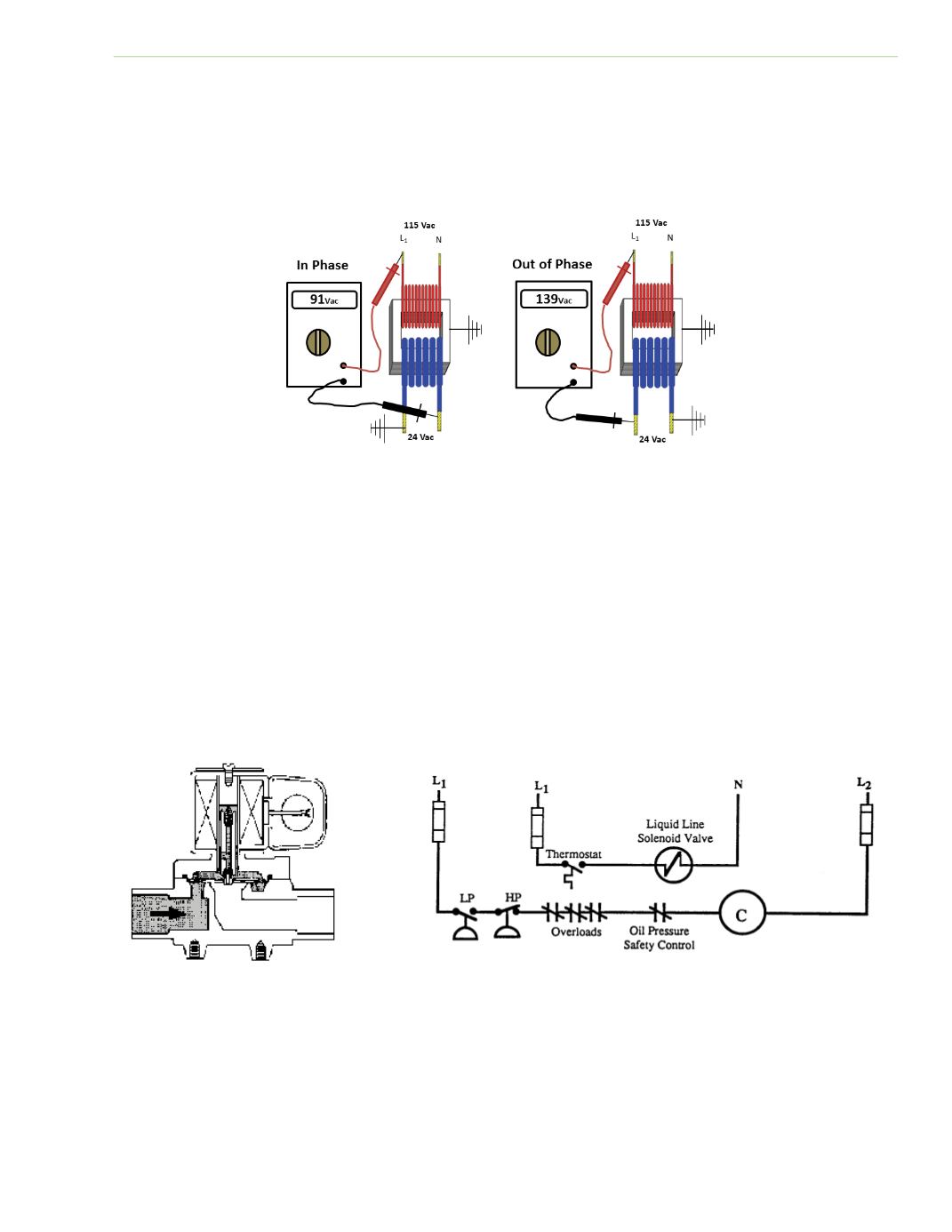

Electrical Theory & Applications for HVACR
Chapter 2: Circuits and Their Components
Page 29
When it is required that one of the leads of a low‐voltage circuit is grounded to the equipment, the
grounded lead must be in phase with the ground. (This configuraƟon is common on equipment with
electronic controls.)
Voltage between the line voltage feed (L1) and the 24‐volt lead used for the feed should be lower
than the supply voltage, as shown in Figure 2‐20(b).
The standard wire size for field assembled low‐volt control electrical wiring is 18‐gauge for runs of 50
feet or less. Follow all manufacturer recommendaƟons.
SOLENOID VALVES
Electrically operated valves are called solenoid valves. When current flows through the coil,
electromagneƟsm is produced and liŌs the valve’s plunger. This opens the valve and liquid flows
through the valve. When the coil is de‐energized, the magneƟc field collapses (disappears) and the
valve closes (normally closed). Some solenoid valves are designed to be normally open, and will close
when the coil is energized. Solenoid valves are frequently used in air condiƟoning and refrigeraƟon
for hot gas bypass systems and automaƟc pump‐down.
RELAYS
A relay uses a magnet to operate a switch or contacts. Relays are oŌen used to control electrical
loads from remote locaƟons. When a relay coil is energized, electromagneƟsm causes a switch to
Fig. 2‐20(b): Transformers connected
Fig. 2‐21: Solenoid valve
Fig. 2‐22: Pump‐down circuit










